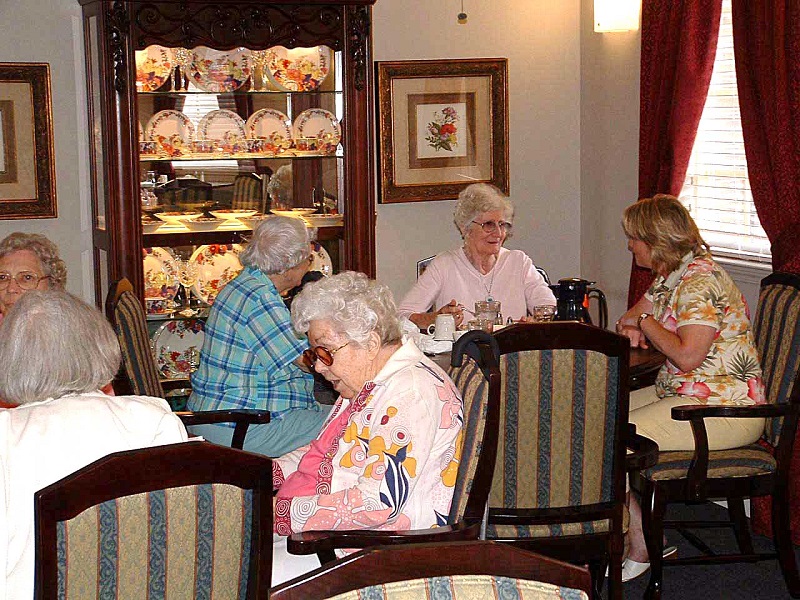How Having A Dysphagia Management Plan Can Help Transform Meal Times
The normal swallow is a complex process that involves precisely coordinated movements within the mouth (oral cavity), throat (pharynx), voice box (larynx), and food pipe (oesophagus). Dysphagia is the medical term for swallowing difficulties. Some people with dysphagia have problems swallowing certain foods or liquids, while others can’t swallow at all (NHS UK). People who have had a stroke, dementia, or have a progressive neurological condition e.g. Parkinson’s disease, MS, MND, or a respiratory condition could be at risk of developing dysphagia.
This condition can cause:
- distress/anxiety for resident/carers
- loss of independence
- loss of dignity
- a person may avoid eating drinking in the presence of others
- social exclusion
- eating and drinking becomes a negative experience
- reduced motivation to eat
Care providers must take action to ensure that:-
- Care plans refer to IDDSI descriptors International Dysphagia Diet Standardisation Initiative
- All staff understand the IDDSI descriptors and how to ensure that food and drink is provided in a safe manner
- Advice is sought from specialists (SLT) whenever there is a risk of dysphagia
- Care plans and risk assessments are consistent
- All staff have an understanding of the normal swallow and dysphagia and know where to get more information/knowledge
- Staff are aware of the signs of swallowing problems especially for people in the risk categories listed above
- Staff work quickly ensure that people with dysphagia can continue to eat a healthy, balanced diet
The International Dysphagia Diet Standardisation Initiative (IDDSI) is a global standard. with terminology and definitions to describe texture modified foods and thickened fluids. used for individuals with dysphagia of all ages, in all care settings, and for all cultures.
With correct plans in place, dining can be transformed and the mealtime experience for residents can be amazing. This has an improved experience for carers, friends, and families as well. Staff should be aware of the contents of the individual’s nutrition/hydration care plan and any Speech and Language Therapy (SLT) recommendations and if any changes are made then make sure staff know about the changes and record appropriately.
All staff should document accurately in food/fluid charts (if applicable) and should know how to raise concerns about the individual’s eating and drinking.
Think about the environment around the dining experience and check the following:
- Reduce distractions and background noise
- Ensure that the lighting is correct, so food is visible and looks appealing
- Encourage socialisation, unless the individual dislikes it or it puts them at risk
- Ensure that the dining rooms are well presented with appropriate furniture and table settings
- Ensure that the individual can sit at their preferred location/table
- Utensils Should be adult appropriate
- Consider size and shape
- Consider specialist equipment if required
- Avoid ‘bibs’
- Avoid beakers - especially spouted ones!
As part of the plan, 'timing' is a factor which will allow for a more independent approach for residents especially being flexibility of timing. You can also create the following as part of the plan:-
How a person is positioned also has to be taken into consideration when thinking of mealtimes:
Optimum positioning is:
- Supportive chair at a table
- Upright at 90 degrees
- Midline o both feet flat on floor
- Chin tilted slightly down
Also:
- Use supports, cushions and rolled towels to help achieve this and assistance at mealtimes if required
- Wash hands (staff and the individual)
- Protect clothing (staff and residents if appropriate).
- Sit upright at same level as the resident
- Ensure the resident has correct dentures, glasses, hearing aids
- Ensure correct utensils and food/fluid consistencies
- Ensure correct food temperature
Maintain conversation (about the food/other topics).
- Explain about the food/ask preferences
- Observe for difficulties
- Allow as much independence as possible
- Ensure face, hands and clothing are clean
- Ensure the individual remains upright for at least 30 minutes
The choice of food should be wide and varied with a nice presentation and an appropriate portion size. Check the consistency is correct and that the taste is great.
Allow as much time as needed and ensure mouth is clear of food. Complete mouth care as needed with dignity. Poor oral hygiene increases the risk of aspiration pneumonia from bacteria in food residue, dentures, cavities and saliva.
What do you need to do?
Use a small-headed toothbrush. If possible use a sodium lauryl sulphate (SLS) free toothpaste. Brush the tongue to remove bacteria and freshen breath. Some people with restricted movements or confusion/memory problems may need help to brush their teeth.
No need to rinse – leave the toothpaste to penetrate the teeth. Rinse the toothbrush in water and always leave it to air dry. It is also important to clean dentures – do NOT use Steradent, only use toothpaste, and brush and rinse after with water.
If you have any questions relating to IDDSI or are coming across challenges implementing the system and would like further guidance or training then please don’t hesitate to get in touch with us as at sales@hcsuk.co.uk or telephone us on 01773 713713 we have a great network of experts who can help you.
The CQC refer to this issue in their “Learning from safety incidents”- issue 6, this details a case study where a care plan was not updated to reflect the advice of dysphagia specialists leading to choking incidents.
Also you can request your FREE copy of our Dignified Dining Solutions Guide – to help people with Dementia to eat better, which includes best practice advice and tips to help support your ladies and gents with Dysphagia to enjoy more independent and dignified mealtimes or visit our website to view our range of fit for purpose product solutions to help enable people living with Dysphagia.





